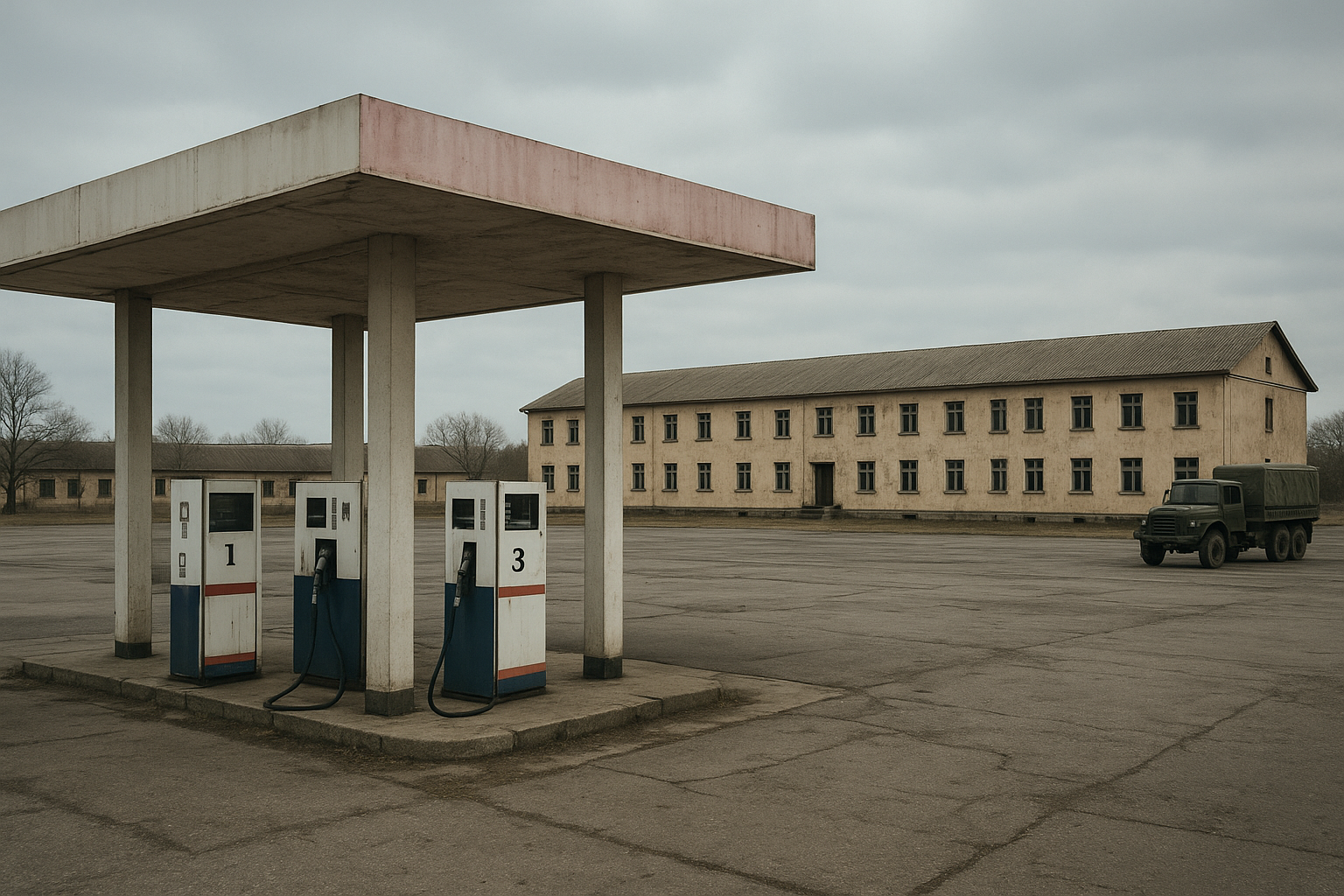It is a curious thing when a superpower begins to run out of the two things it needs most in war: fuel and men. Yet that is precisely what seems to be happening to Russia in Ukraine. After more than two years of fighting, Moscow’s once-vaunted war machine is showing unmistakable signs of exhaustion.
When Russia launched its invasion in February 2022, it relied heavily on professional soldiers but the disastrous battles outside Kyiv and Kharkiv shattered that backbone. Thousands of seasoned fighters were lost, and the logistical chaos that followed forced Russia into an embarrassing retreat from northern Ukraine.
The Kremlin’s answer was Wagner. The mercenary army, battle-hardened from Africa to the Middle East, became the spearhead of Russia’s offensive. For a time, Wagner succeeded. In the brutal fight for Bakhmut, it won headlines, captured territory, and gave Moscow its only significant victory of 2023. Yet those same battles consumed Wagner’s ranks, and the rebellion that followed sealed its demise. The Kremlin had sacrificed its sharpest blade.
Since then, Russia has leaned on a far weaker substitute: poorly trained volunteers and mercenaries recruited from among ordinary citizens. These men have been thrown into grinding assaults in the south and east. For a while, they produced modest gains. Some analysts even warned that Ukraine’s lines were close to breaking, or that the war was sliding toward stalemate. The pressure on President Volodymyr Zelensky’s government was intense.
But Ukraine endured. If its battlefield victories were few, its persistence was notable. Its drones repeatedly struck oil refineries near the front, irritating but not crippling Moscow. Its political leadership refused to crack. And slowly, the picture began to change.
Today, Russia faces a crisis that no artillery barrage can solve: firstly its own fuel shortage. Videos emerging from Crimea show gas stations with long lines and dwindling supplies. In Moscow, the government has gone so far as to ban price hikes at the pump—an extraordinary intervention that signals just how tight supplies have become. Exports of gasoline have also been restricted. The Kremlin may hope this will stabilize the situation, but history suggests otherwise. In the late 1980s, the Soviet Union imposed similar controls, only to create massive shortages that fed into the collapse of the system itself.
Some optimists blame tourism. Crimea, they argue, is simply overcrowded during summer, and supplies will normalize when the season ends. But experts warn the opposite: the shortages may spread. What is now a regional inconvenience could soon reach Russia’s great metropolises—Moscow, St. Petersburg, and beyond. That would be more than an economic irritation; it would be a political one. For a government that has staked its legitimacy on stability, empty gas stations are as dangerous as empty barracks.
Meanwhile, Ukraine’s strikes are becoming bolder. Reports suggest that Kyiv has completed tests of a domestically produced long-range missile, the Flamingo, with a range of 3,000 kilometers—enough to reach deep into Russia’s interior. On August 21, Donald Trump, fueled speculation that Ukraine could soon receive additional Western-made long-range systems as well. If true, Russia’s already vulnerable energy infrastructure may face unprecedented pressure.
And then there is the problem of manpower. Even as fuel grows scarce, so too does cash. In recent weeks, Russian officials admitted that payments to volunteer fighters have been reduced. One local commissar in Yamal tried to spin this as a patriotic test, claiming that true defenders of the motherland should not fight for money. But the truth is hard to disguise: Russia is struggling to afford its own war.
The consequences are immediate. When Vladimir Putin announced mobilization in 2022, hundreds of thousands of Russians fled the country, unwilling to be cannon fodder. Those who stayed often did so for pay. Now, with wages cut and inflation eroding the value of the ruble, even that incentive is slipping away. A war that already lacked enthusiasm may soon lack bodies altogether.
Taken together, these crises suggest something profound. Russia is not just facing setbacks on the battlefield; it is hollowing out from within. Logistics—a dull word, but the lifeblood of any army—threaten to break the Kremlin’s campaign. Shortages of fuel and money are not tactical problems. They are systemic. And once they spread, they are very hard to reverse.
Ukraine has every reason to believe the tide is turning. Just as Russia was forced to abandon Kyiv and Kharkiv in 2022, it may soon find itself unable to sustain its hold over parts of the occupied south and east. The war will not end quickly, and Ukraine’s own sacrifices are immense. But Russia’s weakness is no longer hidden. It is on the surface—at the pump, in the barracks, and in the morale of its exhausted soldiers.
Wars are often decided less by the brilliance of generals than by the endurance of nations. By that measure, Russia is faltering. Ukraine, bloodied but unbowed, still stands.

